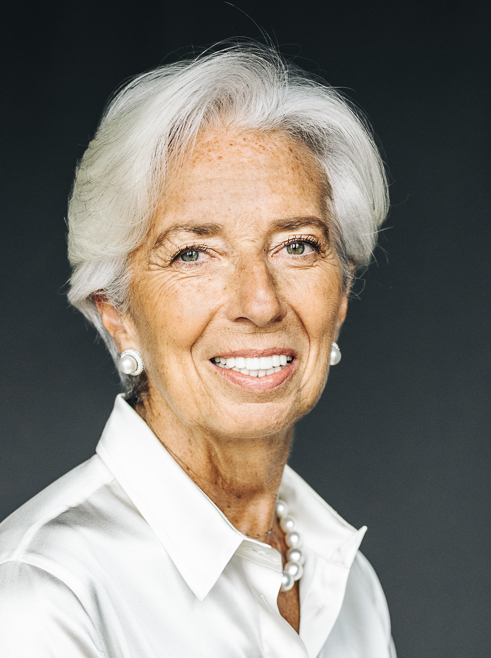- CONTRIBUTION
How to turn European savings into investment, innovation and growth
Contribution by Christine Lagarde, President of the ECB to The Economist
Frankfurt am Main, 4 December 2024
A fragmented financial infrastructure means that Europe gets less bang for its euro
Europe is not short of ideas, innovators or savings. Europeans save more of their income than Americans, and their share in global patent applications is close to that of the United States. But Europe often struggles to turn ideas into new technologies that can drive growth. One reason is that it is much less able than the United States to channel its significant savings into scaling up innovation.
In response, the EU has spent years trying to build a “capital markets union”. Since 2015, there have been more than 55 regulatory proposals and 50 non-legislative initiatives. But a broad agenda has led to little progress. Europe must refocus, exposing the key blockages in the financing pipeline and identifying a smaller number of solutions with the highest return. Three stand out today.
First, Europe’s savings are not entering capital markets in sufficient volume. Europeans hold one-third of their financial assets in cash and deposits, compared with one-tenth in America. If EU households were to align their ratio of deposits to financial assets with that of American households, a stock of up to €8trn ($8.4trn) could be redirected into long-term, market-based investments.
A barrier to such diversification is the retail investment landscape in Europe. Many households face few suitable investment options and high fees. Retail investors in European mutual funds, for example, pay almost 60% more in fees than their American counterparts.
A standardised, EU-wide set of savings products—a “European savings standard”—is the best way to move forward. Such products would be accessible and transparent, offering a range of investment options structured according to clear criteria. And they would be affordable, because there would be less red tape, more comparability and more competition. The attractiveness of the European standard would also be enhanced by harmonising tax incentives across countries.
Second, when savings do reach capital markets, they are not expanding throughout Europe. That limits the ability to build up large pools of capital to finance transformative technologies. For example, more than 60% of households’ equity investment takes place within their own country.
These national silos are sustained by an extraordinarily fragmented set of financial market infrastructures. The EU boasts 295 trading venues, 14 central counterparties and 32 central securities depositories (CSDs). In the United States, there are only two securities clearing houses and one CSD.
A patchwork of different corporate, tax and securities laws hinders consolidation, exacerbated by national authorities mandating the use of national CSDs for certain transactions. Europe’s approach to overcome these barriers has been incremental harmonisation. But progress is much too slow.
Europe needs a change in method to bypass entrenched vested interests. That is why last year I called for a “European SEC” to provide enforcement of a common rulebook across the EU as the Securities and Exchange Commission does in America. But alongside this goal, there are complementary options Europe can pursue.
One would be a two-tier approach, as Europe already has for competition enforcement and banking supervision. Financial-services providers that fulfil certain criteria—such as size or cross-border activity—would fall under European supervision. National authorities would continue to supervise smaller national players.
Another option would be to use “28th regimes” in areas where progress has stalled—a special EU legal framework with its own regulations sitting alongside those of the 27 member states. For example, we could envisage a 28th regime for issuers of securities providing unified corporate and securities law.
Third, once savings have been allocated by capital markets, they are not exiting towards innovative companies and sectors, owing to an underdeveloped ecosystem for venture capital (VC) in Europe. VC investment is only around one-third of American levels, and Europe is largely reliant on American VCs to fund innovation. More than 50% of late-stage investment in European tech comes from outside.
Europe should aspire to have American levels of VC, but it will not happen overnight. In the meantime, the EU needs to use all the flexibility in its financial system to help plug the gap.
Given that institutional investors have long investment horizons, the EU’s regulatory regime should allow them to contribute more to long-term growth. For example, EU pension funds allocate just 0.01% of total assets to European VC, a fraction of what their American counterparts invest in American VC.
The EU should also fully harness the potential of the European Investment Bank to pool risks and crowd private capital into European VC. And it should explore how to support innovation not only through equity, but also through debt. Developing securitisation in Europe could allow banks to free up balance-sheet space and play a greater role in financing innovation.
Progress in these three areas will be self-reinforcing. More high-growth companies will mean higher valuations, greater liquidity in EU markets and higher returns for savers. But it will require a change of approach from taking a large number of small steps to a small number of large ones—and choosing those that are most feasible and that will make the biggest difference.
This contribution is based on the speech held by President Lagarde at the European Banking Congress on 22 November 2024.
Európska centrálna banka
Generálne riaditeľstvo pre komunikáciu
- Sonnemannstrasse 20
- 60314 Frankfurt nad Mohanom, Nemecko
- +49 69 1344 7455
- media@ecb.europa.eu
Šírenie je dovolené len s uvedením zdroja.
Kontakty pre médiá


